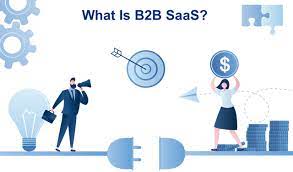Software as a Service (SaaS) has revolutionized the software industry by offering cloud-based applications accessible through the internet. SaaS solutions provide businesses and individuals with cost-effective, scalable, and flexible software offerings that cater to various needs. In this article, we will delve into some of the most prominent SaaS examples across different industries, highlighting their impact and advantages.
1. Customer Relationship Management (CRM)
One of the most widely adopted SaaS examples is Customer Relationship Management (CRM) software. CRM platforms, such as Salesforce, HubSpot, and Zoho CRM, help businesses manage interactions with current and potential customers. They enable sales teams to track leads, manage customer data, and streamline communication, ultimately improving customer relationships and boosting sales performance.
2. Project Management
Project management tools in the SaaS domain have transformed the way teams collaborate and manage tasks. Applications like Asana, Trello, and Monday.com offer intuitive interfaces that facilitate project planning, task assignment, and progress tracking. These SaaS solutions enhance team productivity and foster efficient project execution.
3. Human Resources and Payroll
SaaS HR and payroll systems have become invaluable for businesses seeking to streamline their HR processes. Solutions like BambooHR, Gusto, and ADP offer a range of features, including employee onboarding, time tracking, payroll processing, and benefits administration. By automating these tasks, businesses can focus on nurturing their workforce and promoting employee satisfaction.
4. Enterprise Resource Planning (ERP)
Enterprise Resource Planning (ERP) systems have long been associated with complex, on-premises software installations. However, modern SaaS ERP solutions like NetSuite and Acumatica have made ERP accessible to businesses of all sizes. These cloud-based systems integrate various business processes, such as accounting, inventory management, and procurement, into a single platform, facilitating seamless operations and data visibility.
5. Accounting and Finance
SaaS accounting and finance software offer a streamlined approach to financial management. Examples like QuickBooks Online, Xero, and FreshBooks empower businesses with features like invoicing, expense tracking, and financial reporting. Their cloud-based nature allows real-time access to financial data, making it easier for businesses to stay on top of their finances.
6. Email Marketing
SaaS email marketing platforms have simplified the process of reaching and engaging with customers. Tools like Mailchimp, Sendinblue, and ConvertKit provide businesses with user-friendly interfaces to create, automate, and analyze email campaigns. These platforms help improve customer engagement and enable targeted marketing efforts.
7. Collaboration and Communication
SaaS collaboration and communication tools have transformed how teams interact and work together. Platforms like Microsoft Teams, Slack, and Google Workspace (formerly G Suite) offer chat, video conferencing, file sharing, and document collaboration features. These tools foster seamless communication, even for remote or distributed teams.
8. E-commerce Solutions
SaaS e-commerce platforms have revolutionized the way businesses set up and manage online stores. Examples like Shopify, BigCommerce, and WooCommerce provide user-friendly interfaces, enabling entrepreneurs and businesses to create and run online stores without extensive technical knowledge. These platforms offer various tools for product management, payment processing, and order fulfillment.
Conclusion
SaaS examples demonstrate the versatility and transformative power of cloud-based solutions across different industries. From CRM and project management to HR, finance, and e-commerce, SaaS applications offer businesses scalable and cost-effective solutions to optimize their operations. The flexibility and accessibility of SaaS have made it an essential component of modern businesses seeking to leverage the latest technology to stay competitive in today’s fast-paced digital landscape.







